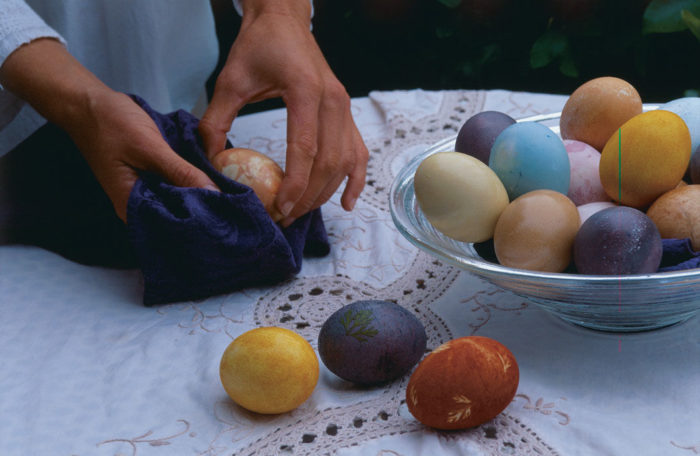
A cup of coffee isn’t the first place I would have expected to find nature. It was my father’s cup, one of many strewn across the kitchen table one Easter eve long ago. The other cups fizzed with those little crayon-colored tablets; the acrid vinegar stung our eyes and noses. My mother eyed my father’s coffee and impulsively plopped in a hard-boiled egg. I scanned the pictures on the back of the dye kit box for a coffee cup while my 6-year-old mind wondered if using coffee was allowed.
When the egg emerged smooth and caramel brown, the quest for natural Easter egg dyes began. We searched the refrigerator for beets and raspberries, and scoured cupboards for the spices that would give us vivid golds and reds. Our hunt led us into the garden with shears and spades, clipping carrot tops and spinach leaves, and digging for onion skins.
The seeds of experimentation were planted deep, for I’ve yet to lose my inherited curiosity or my love of colors the earth provides. There’s always a new garden denizen to consider, another leaf to coax into a feathery stenciled design. It’s a simple process and an inexact science—more art, really, with room for improvisation.
How to dye Easter eggs
| Dye sources, and the colors they produce Following are the dye sources I’ve found to yield the richest colors. Remember to use only edible plants or portions of plants (no rhubarb leaves, for example). |
|
| • Onion skins | marbleized oranges and yellows |
| • Onion skins with unsprayed rose petals | peachy hues with green or yellow tints |
| • Shredded red cabbage | midnight blue and teal |
| • Beet root | brown with a purple cast |
| • Beet tops | dove gray |
| • Spinach | pale green |
| • Carrots | yellow with olive overtones |
| • Carrot tops | soft gold |
| • Blue potatoes | muted teal |
| • Grape juice | deep lavender (for a lovely crystallized sugar coating, let the egg dry without rinsing) |
| • Blueberries (frozen is fine) | deep blue |
| • Raspberries (frozen is fine) | light fuchsia |
| • Blackberries (frozen is fine) | plum |
| • Coffee | milk-chocolate brown |
| • Black tea | reddish tan |
| • Cinnamon | subdued mahogany |
| • Paprika | light orange |
| • Turmeric | vivid gold |
| NOTE: Beware of using cayenne. When it is boiled in water, its vapors permeate the air and can irritate the eyes. | |
I start with fresh, clean, white eggs placed in a stainless steel or enamel pan. You can experiment with brown eggs, but they don’t absorb color as well. Then I add the dyestuff—leaves, flowers, vegetable peelings, spices, roots. I rinse the vegetable matter, especially if it isn’t organic or doesn’t come from my own garden.
Next I add water to cover the eggs and dye materials. I use water slightly warmer than the eggs to reduce the risk of cracking. A little vinegar helps break down components in the eggshell to allow it to absorb the dye better. Slowly, I bring it all to a gentle boil, reduce the heat, and simmer until done, about 15 minutes.
At this point, I’ll either run cold tap water into the pan to stop the cooking, or leave the eggs in the dye bath up to two hours to deepen the shade. This may lead to overcooked but edible eggs, marked by green rings around the yolk. Since I’m concerned with the color of the shell, I feel it’s worth the compromise. I’ll even steep the eggs in their dye water in the refrigerator overnight for still darker hues—a safe alternative to leaving the eggs out at room temperature. Afterwards, I let the eggs air-dry, then polish them. If you plan to eat the eggs, refrigerate them, but if they’re purely decorative, you can leave them out.
This method can be applied to any natural dye source; what differs will be the amount of dyestuff used. For fresh flowers and greens, vegetable peelings, or berries, use 2 cups of material per quart of water; for dried flowers or leaves, 2 tablespoons per cup of water. For ground spices, use 2 teaspoons per cup of water. You can also experiment by substituting pure fruit juices that are rich in color in place of water and other dye materials.
Color and patterns come from the world of nature
Natural egg dyeing, like everything in nature, has its idiosyncrasies. The most obvious is the illusion of color: A plant often looks unlike the color of its dye. Red and white onion skins yield pale apricot hues; green and red beet tops produce a mauve gray. And the color of the dye bath can vary dramatically from the final dye color.
A plant may produce a different dye water when steamed rather than boiled. Add baking soda to the mix and the color will change again. Red cabbage, for instance, yields blue, celery, or teal hues depending on whether you steam the plant first, boil it, or add baking soda. That’s when the lure of experimentation ensnares you, and before long your kitchen takes on the appearance of a chemistry lab.
With natural dyes, the character of each egg emerges through markings on the dyed shell. Some appear mottled or etched like a wild bird’s egg, others absorb the dye in streaked bands. Science attributes these variations to an uneven distribution of calcium in the shell. I prefer the notion that the closer we work with nature, the more our results approximate hers.
Artistic touches
Since there are no wax crayons in the natural world, I’ve turned to the intricate patterns of leaf and flower to design my eggs. By affixing tiny bits of greenery before dyeing, you can create delicate natural stencils. Small, soft flowers and leaves with crisp outlines, like ferns, work best. Experiment, as some materials are too thin to block out the dye, while others are too stiff and may need to be blanched for a short time to soften.
Stick greenery to the egg by wetting it with egg white thinned with water. Then wrap the whole egg, greenery attached, in a square of cheesecloth and secure at the top with string. Follow the same dyeing process as before and rinse before unwrapping. The result is a striking silhouette where the leaf or flower was attached.
One of the most artistic effects is made by wrapping layers of yellow onion skins around the egg. Or first encase the egg in rose petals, then onion skins. Secure it all in cheesecloth and simmer in water (don’t use vinegar with onion skins). This produces a beautiful marbleized appearance. After running out of onions, I’ve been caught rummaging through the produce bins of my local market for extra skins—this is guaranteed to draw curious looks from store clerks.
The appeal of dyeing with natural materials is that you’re free to invent your own rules. Soon you’ll be looking with fresh eyes on every weed, flower, and fern for dye potential. You may even find it in a cup of coffee.
| Basic recipe for Easter egg dye • 6 uncooked eggs • Dyeing material: berries, vegetable peelings, etc. • White vinegar • Water to cover eggs • Baking soda (optional) • Vegetable oil (optional) |
Place uncooked clean eggs in a pot large enough to accommodate all the ingredients. If using fresh material, add 2 cups per quart of water. For dried flowers and herbs, use 2 Tbs. for every cup of water. For ground spices, 2 tsp. per cup.
Add water slightly warmer than the eggs, one cup at a time, to cover all by 1 in. Add 1 tsp. of vinegar for every cup of water. To change the dye color of most fresh materials, add 1⁄4 tsp. baking soda per cup of water.
Bring water to a gentle boil, then reduce the heat and simmer for about 15 min. When the eggs are done, remove them from the dye bath. For a deeper shade, let them cool in the dye bath or refrigerate to steep overnight.
Air-dry so as not to rub off the dye. For a subtle sheen, polish with vegetable oil.
Marbelizing an egg, using an onion skin dye
Lay a square of cheesecloth flat and cover its surface with the onion skins, so that no fabric shows. (Add a layer of fresh rose petals for a peachy hue.) Place the egg in the center and gather the edges tightly around the egg, securing at the top with string.
Place wrapped eggs in a pan with enough water to cover. The water should be slightly warmer than the eggs. Do not use vinegar with this dye. Bring to a slow and gentle boil. Reduce heat and simmer for 15 min. Remove from heat and let eggs cool in the dye bath for up to 2 hours. Unwrap and gently dry. Try red or white onion skins for a different hue.
| Onion-skin dye materials (for a half-dozen eggs)
• 6 white eggs |
1. To create a marbleized look, start with onion skins, cheesecloth, a bit of string, and an egg.
2. Lay the onion skins over the cheesecloth; and place the egg on top.
3. Encase the egg with skins and gather all together in a bundle
4. Boil in the dye bath and remove the bundle when cool. Peel off the onion skins; rinse lightly and dry gently.
5. Peel off the onion skins; rinse lightly and dry gently. For a sheen, polish with vegetable oil.
This article was originally published in Kitchen Gardener Issue 14.
Fine Gardening Recommended Products

A.M. Leonard Deluxe Soil Knife & Leather Sheath Combo
Fine Gardening receives a commission for items purchased through links on this site, including Amazon Associates and other affiliate advertising programs.
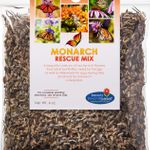
Monarch Butterfly Rescue Wildflower Seeds 4 oz.
Fine Gardening receives a commission for items purchased through links on this site, including Amazon Associates and other affiliate advertising programs.

Gardena 3103 Combisystem 12-Inch To 20-Inch Adjustable Metal Fan Rake Head
Fine Gardening receives a commission for items purchased through links on this site, including Amazon Associates and other affiliate advertising programs.

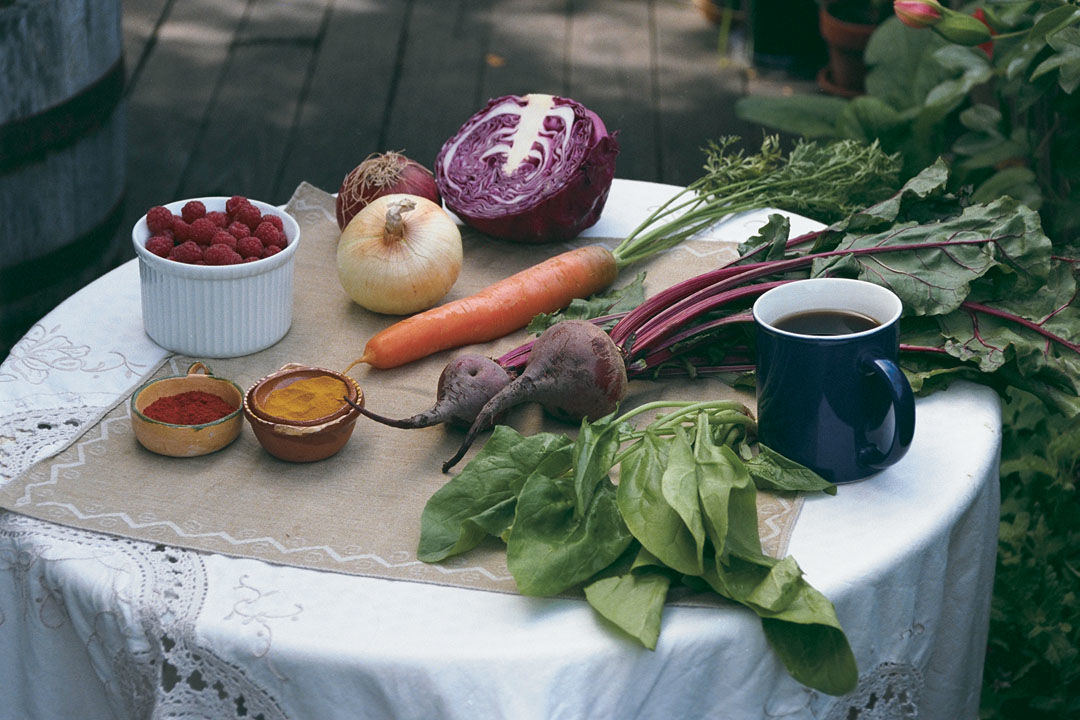
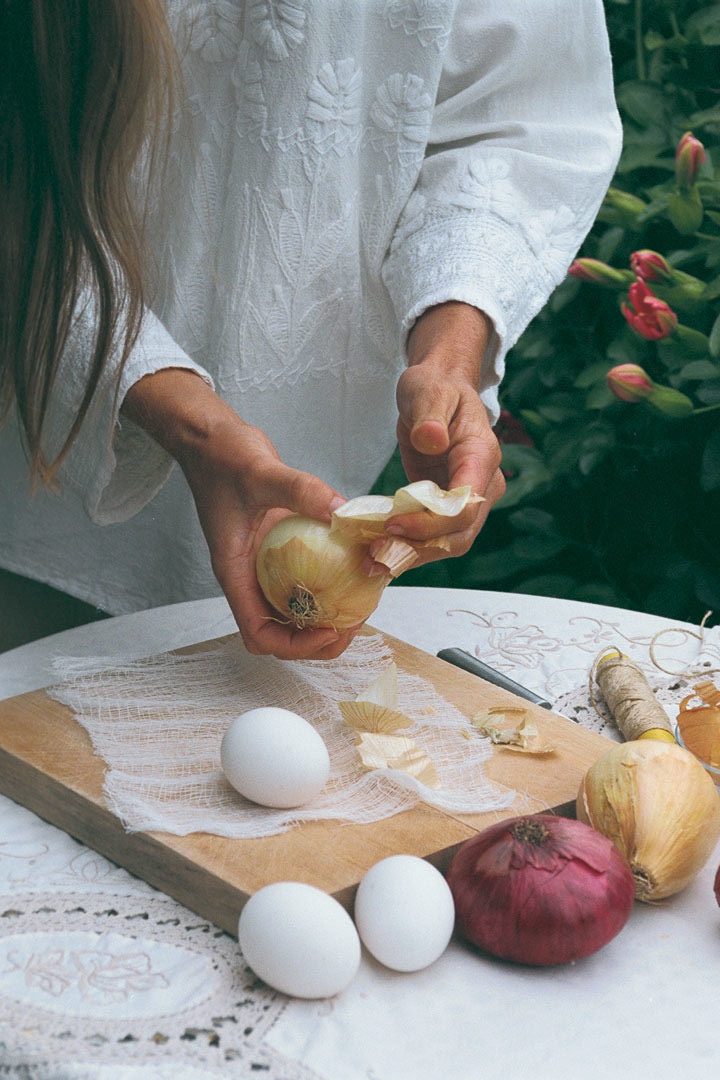

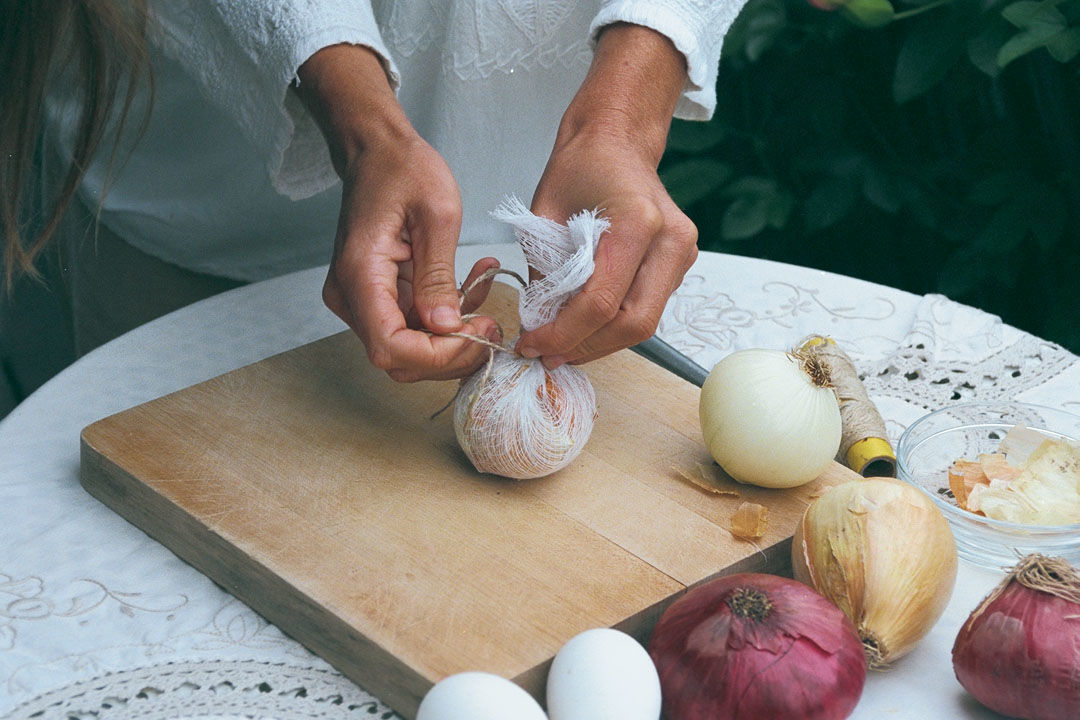
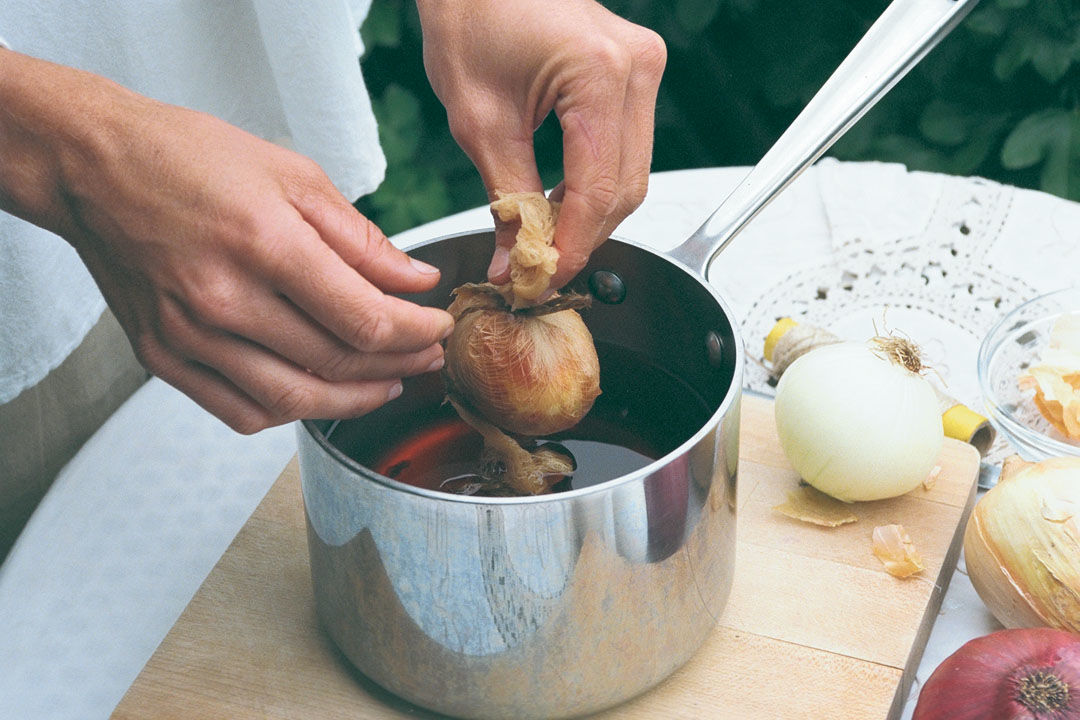
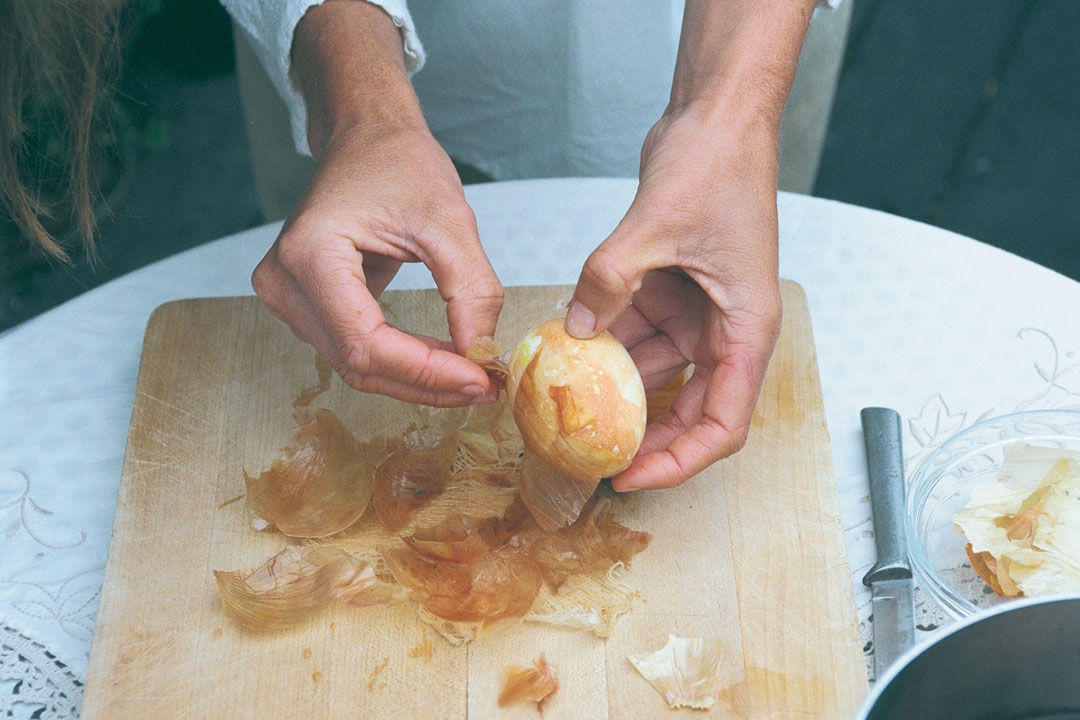
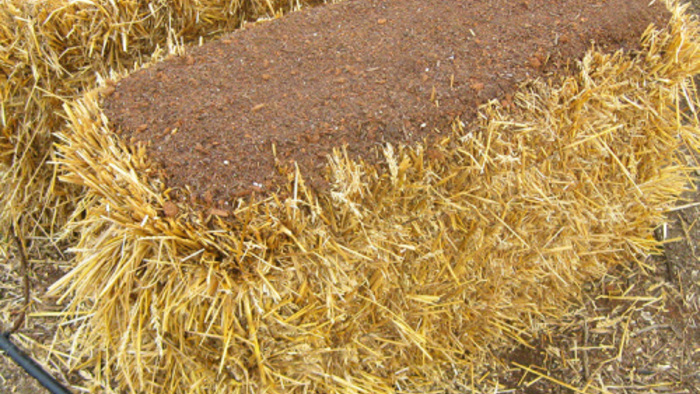

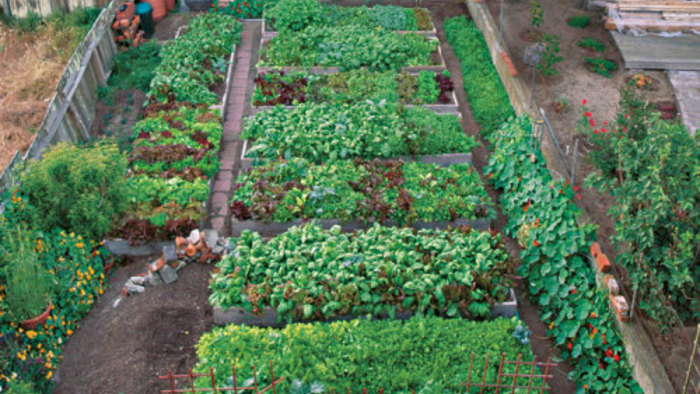














Comments
Log in or create an account to post a comment.
Sign up Log in